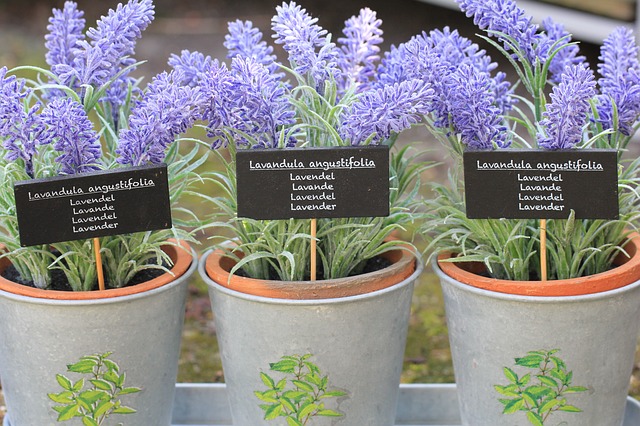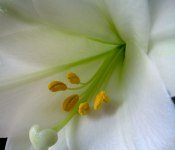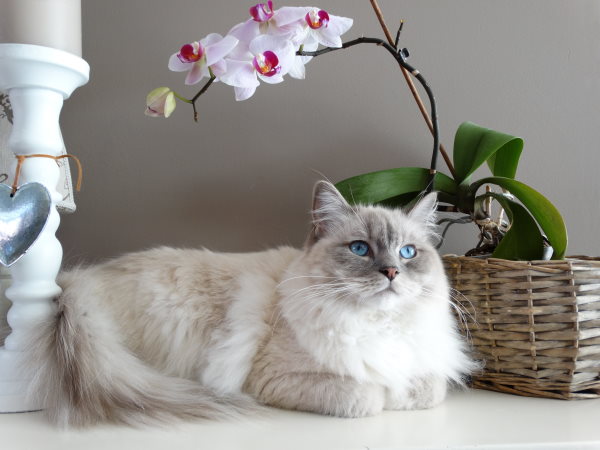Goldfish Plant Care
Goldfish plant gets its common name from the long, tubular orange or orange-red flowers that look like everyone's first pet -- goldfish.
Put this exotic trailing plant in a hanging basket or on a pedestal table to show off its spectacular foliage and blooms.
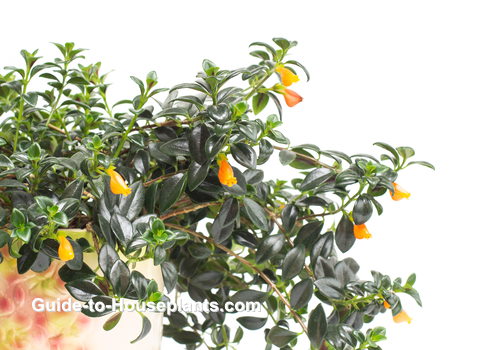 This eye-catching tropical houseplant is just plain fun to have around.
This eye-catching tropical houseplant is just plain fun to have around.Get to Know Your Goldfish Plant
Columnea gloriosa is a perennial and will last for several years with good care.
How big does it get? Long stems can reach up to 3 ft (90 cm) and are densely covered with thick, waxy, dark-green leaves.
Small, tubular flowers may be orange, red, or yellow, depending on the variety. You can expect your plant to bloom abundantly in spring and summer.
More than 150 species and hybrids of Columnea exist. Most are trailing or at least leaning, making goldfish plants ideal for displaying in hanging baskets.
Many named hybrids are available, offering a colorful variety of leaves and flowers. 'Firebird' and 'Aladdin's Lamp' have red flowers and dark-green leaves. Yellow blooms edged in red make 'California Gold' a stunning house plant. 'Chanticleer' is a prolific bloomer with a compact growing habit.
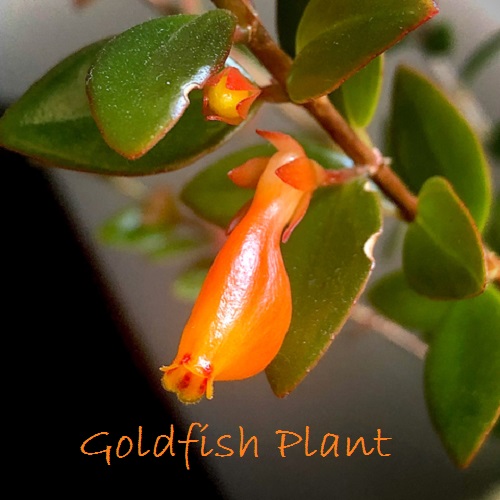 Close-Up of the Goldfish Plant Flower. Photo © Graham Rieger
Close-Up of the Goldfish Plant Flower. Photo © Graham RiegerYear-Round Care for Your Goldfish Plant
Get the most blooms. You can expect dozens of blooms on mature plants in spring and summer. Some plants may also bloom at other times during the year. You'll get the most blooms by providing plenty of bright, indirect light. Keep the soil slightly dry in the winter to help promote heavy flowering in spring. Just be careful not to allow the soil to dry out completely.
Pinch your plant. Pinch off the growing tips often to encourage branching. You'll be rewarded with a much nicer-looking plant that is compact and bushy. It's a good idea to keep the stems at 12-18 inches (30-45 cm) to prevent goldfish plant from getting leggy. If you want, you can propagate the stem tip cuttings for more plants. (See "Propagation" tips below.)
To repot...or not? This one likes to be slightly root-bound, and blooms best this way. Repot in spring when it has outgrown its pot. Columnea likes loose potting medium, so don't pack it down. Use a container with drainage holes to prevent soggy soil. If you want to use a decorative planter without drainage holes, use it as a cachepot. Just slip a plain nursery pot inside the cachepot. I put pebbles in the bottom of cachepots to keep the inner pot above any drainage water.
Something bugging your houseplant? Spider mites and aphids are possible indoor pests. Isolate an infested plant and treat it right away. You don't want these pests to move on to your other houseplants.
Dropped leaves? This tropical native doesn't like the cold at all, which can cause leaf drop. Also keep up the humidity around it -- dry air can cause leaves to fall off.
Brown leaves? Don't put this tropical native outdoors for the summer. Keep it indoors year-round. Goldfish plants don't like high heat or direct sunlight, which can cause its leaves to turn brown.
Goldfish Plant Care Tips
Origin: Central and South America
Height: Stems may grow up to 3 ft (90 cm) long if not pinched back.
Light: Goldfish plant needs plenty of bright, indirect light to bloom. Keep this tropical native out of hot, direct sunlight, which will turn the leaves brown.
Water: Spring through fall, water thoroughly and allow the top 2 inches (5 cm) to dry out between waterings. Water less often in winter, but don't dry it out completely. Always use tepid water to for your indoor plants, because cold water is a shock to them.
Humidity: Moderate to high (50% relative humidity or higher). Use a cool-mist room humidifier or a humidity tray to maintain moist air. Or mist foliage every day -- use room-temperature water because cold water will cause brown spots on the foliage. It's a good idea to use a humidity monitor near your plant rather than guess; indoor air can become extremely dry, especially during the winter months.
Temperature: Warm room temperatures (65-80°F/18-27°C) year-round. Goldfish plant will tolerate a minimum of 60°F/16°C in winter. Exposure to cold will cause its leaves to fall off. Don't expose the plant to cold drafts from windows, doors or AC vents.
Soil: Peat moss-based mix, such as African violet potting mix.
Fertilizer: Feed every 2 weeks spring and summer with a high-phosphorus liquid or water-soluble fertilizer (such as 15-30-15) diluted by half. Water before fertilizing to prevent burning the plant's roots.
Propagation: Take 4 in (10 cm) stem tip cuttings (without flowers) in spring or summer. For best results, dip cut end in rooting hormone powder, then insert in lightly moist potting mix. Keep your goldfish plant cuttings consistently warm (70°F/21°C) using a seedling heat mat.
